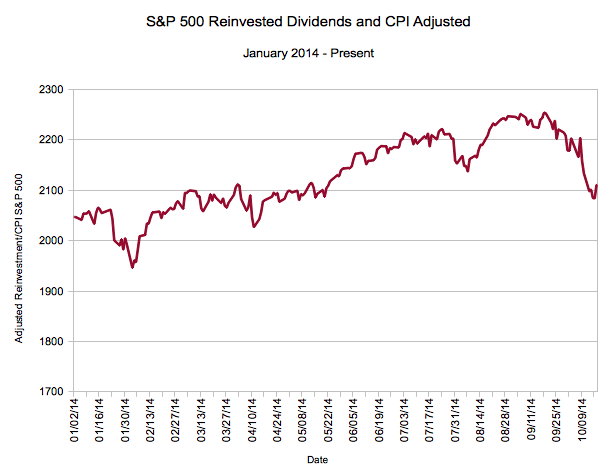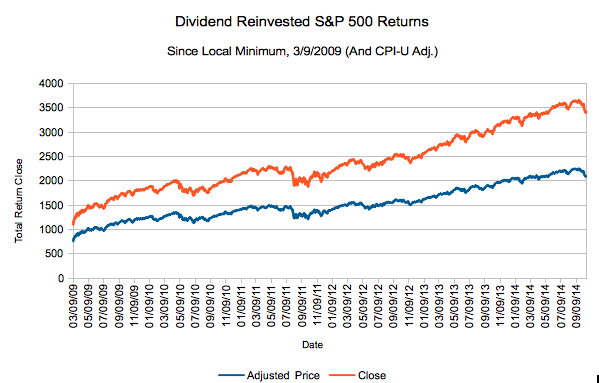We've mentioned it before, one or two (hundred) times... the best way to evaluate investment performance in a vacuum isn't by using the 'price level' of an index. Instead, it is best to check the relative purchasing power increase an investment has brought to the table - and you can only do that by adjusting for inflation and finding a way to include the influence of dividends.
So, here's that effort for the S&P 500's performance through October 17, including the recent shakiness in the market.
S&P 500 Inflation and Dividend Adjusted Performance
That drop doesn't look so precipitous on a longer scale, eh? Here's the chart for just 2014:
 Looks a bit worse. However, here are the changes in table form... and they're still positive:
Looks a bit worse. However, here are the changes in table form... and they're still positive:
| Nominal | Inflation Adjusted | Annualized/CPI-Adjusted | |
| Year to Date | 3.73% | 2.22% | 2.80% |
| Year Over Year | 11.11% | 9.02% | 9.02% |
| Since 03/09/09 | 214.09% | 180.03% | 20.14% |
If you want to compute the returns for a different time period, use our S&P 500 Dividend Reinvested return calculator (it also does inflation).
Methodology
S&P 500 Total Returns from S&P Dow Jones Indices, CPI-U from BLS.
As of this article, CPI-U was only available through August, so the last months are extrapolated. All numbers are normalized to 1/3/1994, where the S&P 500 Total Return stood at 567.095 and CPI-U's level at 146.326.
Conclusion
Not much to say except you're still up on the year if you invested in January. Also, interestingly, it's been a month or so since the 'real' peak by this math - 9/18/2014.
Any thoughts/questions/concerns?

